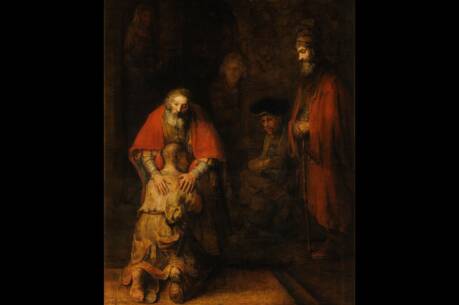Seeing and hearing through the lens of faith
This Sunday presents a striking contrast with the previous one. Last week, the closest blood relatives of Jesus unanimously rejected his credentials to lead the people of Israel as some great messiah-shepherd figure. His close and distant relatives take offense at his growing status as a healer and teacher among the faithful. “He was amazed at their lack of faith” (Mk 6:6).
Jesus summoned the Twelve and began to send them out two by two and gave them authority over unclean spirits. (Mk 6:7)
Does it matter that your pastor adopts a uniform for his community?
What are external markers that set you apart from others?
What internal qualities help you to build your faith journey?
Today’s Gospel, however, presents the disciples with unbounded faith, a rare moment for Jesus’ pupils, different from the unflattering way they are usually portrayed in Mark’s Gospel. Where family members failed to see the divine presence of their relative, this Sunday the disciples see and hear through the lens of faith. Jesus’ new family, his disciples, moves with no hesitation wherever Jesus points.
The passages from Chapter 6 of the Gospel of Mark are concerned with credentials for leadership. In today’s scene, however, there is something of a digression depicting the disciples as fully formed apostles on mission, who seem to understand what their task requires. “So they went off and preached repentance. The Twelve drove out many demons, and they anointed with oil many who were sick and cured them” (Mk 6:12-13). The image jolts one’s imagination, as the opening verses of the chapter (Mk 6:1-6) reveal a rejected messiah at Nazareth. Now the disciples reflect an image of Jesus at his core. They are men on mission who anoint the sick, heal and cast out demons. This is the central mission of Jesus in the Gospel of Mark, but now we see it transferred onto the disciples early on within the narrative. What is happening?
The scene appears to be and should be understood as a post-Easter image of the early church. Fueled by faith in the resurrection, the apostles moved about on mission as their shepherd had taught them all along while he was still with them. Today’s passage is a glimpse of that Easter reality that is yet to come. It serves its purpose within the chapter by providing an image of the exterior requirements for fully formed disciples in the first-century B.C.E. Jesus begins to instruct his faithful students to “take nothing for the journey but a walking stick—no food, no sack, no money in their belts. They were, however, to wear sandals but not a second tunic” (Mk 6:8-9).
This “uniform” for apostles has a different description in Matthew and Luke (Mt 10:10, Lk 10:4), which present their narratives to different audiences and hearers from other places. The uniform, or the outward look of discipleship, takes a different shape with different communities. Several groups at the time of Jesus had their own “look,” such as the Essenes from Qumran, the Pharisees and the followers of John the Baptist. Today, the garments and rule of life for diocesan priests and religious brothers and sisters follow this ancient example to present a visible image.
A uniform may signal to the community that an individual or group represents a certain camp or way of life. The message is rather limited, though. The garment says nothing about the genuine faith a person carries within the heart. What drives and motivates a person to adopt a different garment that represents a distinct way of life? A disciple must respond to Paul’s exhortation in today’s second reading. “In him we were also chosen, destined in accord with the purpose of the One who accomplishes all things according to the intention of his will” (Eph 1:11). How does one carry out the intentions of the “One” called Jesus? How can anyone really know the divine will? This will finally be revealed in the readings next Sunday, when Jesus comes close to full disclosure as the shepherd of Galilee.








